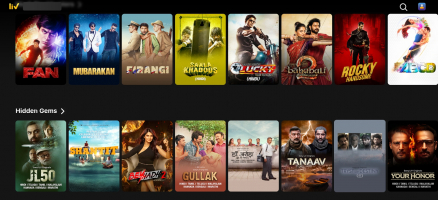Top 10 Best Destinations to Watch Dolphins & Whales in Europe
Many beautiful and intelligent cetacean species live in the waters around Europe. And, contrary to the popular belief that whale and dolphin watching can only ... read more...be done in faraway, exotic locations, Europe offers a plethora of incredible opportunities for whale and dolphin watching. And here is a list of fantastic locations where you can see these magnificent creatures right where they belong: in the wild.
-
The Azores archipelago is one of the world's most remote and pristine locations. These nine islands, located in the North Atlantic Ocean, are a long way from the European continent, approximately 1,600 kilometers west of mainland Portugal. It is precisely because of this remoteness that the natural landscapes of this archipelago have remained nearly intact. They are known as the "Hawaii of the East" because of the volcanic craters and turquoise lagoons that have emerged, creating a subtropical wonderland teeming with life.
With such a diverse surface, the aquatic life beneath the Atlantic Ocean is equally diverse. Azores, home to many species of whales and dolphins, turtles, and other marine animals, is renowned as one of the best places in the world to go whale and dolphin watching. Because of their annual migration, the spring months are usually the best time to see these magnificent creatures, especially in April and May.
During the cold winter months, they breed in tropical waters, preparing their calves for the long journey to the North Atlantic. The Azores serve as a stopover on their way to their final destination: feeding grounds near Greenland, Iceland, and Norway. From March to June, they pass through the Azores, stopping for several days to feed on the archipelago's coast. Summer, on the other hand, is the best time to see the favorite and most friendly cetaceans, dolphins. When conditions are calm and warm, larger groups of families and friends pass by near the island's waters. However, no matter when you visit the Portuguese archipelago, you'll almost certainly meet some of these new friends at sea. All year, four resident species can be seen: common dolphins, bottlenose dolphins, Risso's dolphins, and sperm whales.
Because of its nutrient-rich waters, the Azores are a hotspot for both resident and migratory species. A staggering 28 of the 87 existing species of cetaceans have been spotted in the area. The Blue whale, Fin whale, Sei whale, and Pilot whale are among them. Other than the Common, Bottlenose, and Risso's dolphins, this region is home to rarer dolphins such as the Striped dolphin and the Atlantic Spotted dolphin. Although orcas (also known as killer whales) can be seen, the chances of seeing the largest member of the dolphin family are slim.
Location: Portugal
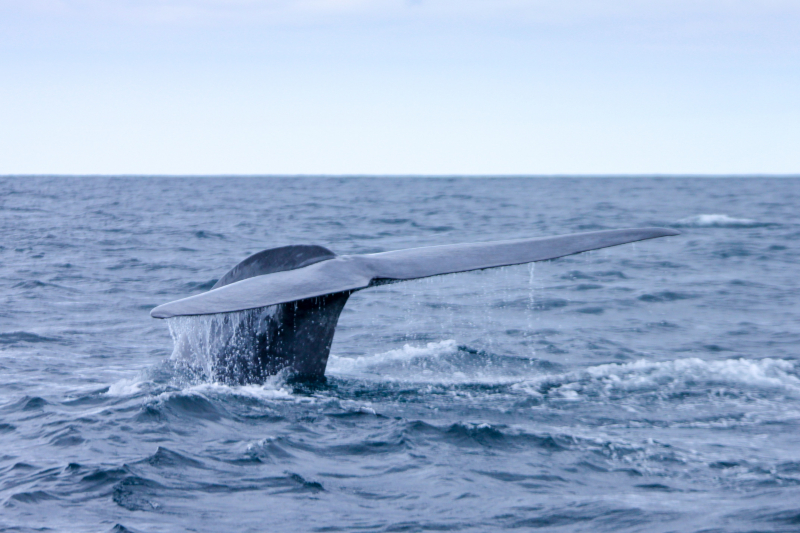
Photo by Mayte Garcia Llorente on Unsplash 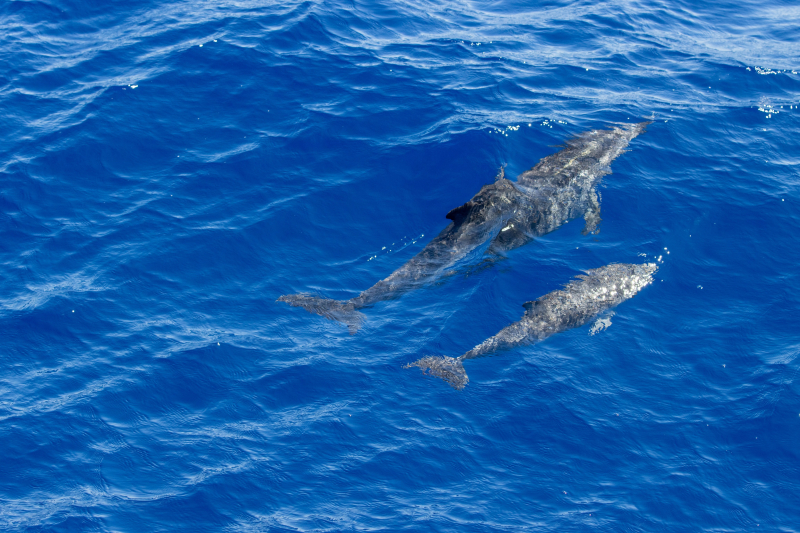
Photo by Rita Candeias on Unsplash -
As if the unparalleled landscapes revealed in every corner of Madeira weren't enough, the archipelago's crystal-clear waters are also home to a vibrant world. This sea, which reaches 3000 meters in some places, is home to an extremely rich fauna, making Dolphin and Whale Watching in Madeira one of the most popular activities in the archipelago. Are you sure you want to stay on land? While enjoying a relaxing boat ride, you may come across a lively group of dolphins or catch a glimpse of whales. Whale watching in Madeira also allows you to see turtles and visit the Desertas Islands' small colony of Mediterranean monk seals.
Whale Watching in Madeira is a year-round activity due to the island's privileged location, and you can also take advantage of this tranquil boat trip to take a relaxing dip in the always pleasant and inviting waters off the coast. Set out on a whale-watching adventure in Madeira and create unforgettable memories! Every year, a large number of whales pass through Madeira. According to research, 28 of the 78 known species can be found on this island, ranging from various dolphin species to great blue whales. The arrival of the Fin and Sei whales on the island in 2003 increased Madeira's popularity. Fortunately, the government is taking steps to protect them from over tourism. Swimming with dolphins, for example, is only permitted with three species. There are tours available in the morning, afternoon, and at sunset. There is no optimal time to see dolphins and whales. The chances of seeing a whale are slim, but the chances of seeing dolphins are very high all day.
Location: Portugal
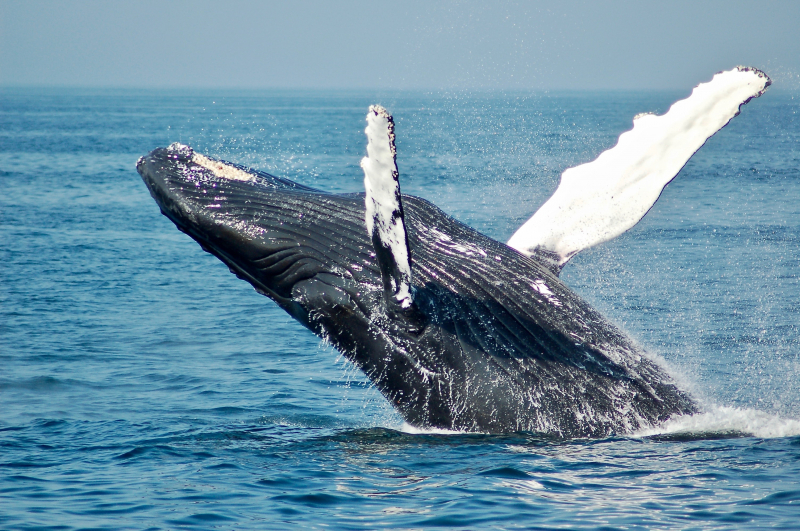
Photo by Todd Cravens on Unsplash 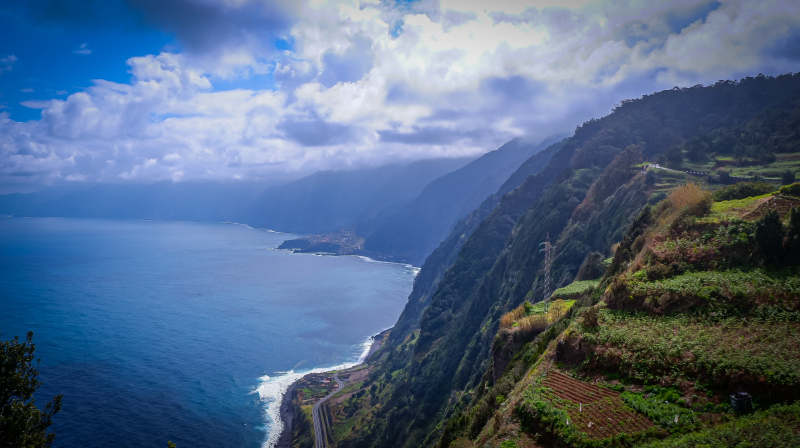
Photo by Jakub Šichta on Unsplash -
From its world-famous aquarium to unforgettable encounters with whales in its waters, Monterey Bay is a haven for marine wildlife enthusiasts. The deep submarine canyon near the coast provides an ideal habitat for a variety of marine mammals, including whales! As a result, it's no surprise that this is one of the best places in the world to see these magnificent creatures. Humpback whales can be seen in Monterey Bay almost any time of year, but they are most common in the summer and fall. Humpback whales migrate to the warm waters of Mexico in the winter to breed and calve.
During the summer, they return to central California. From mid-April to mid-December is the best time to see humpback whales. It's thrilling to watch these playful whales breach, slap their fins, and lob their tails. This is also the best time of year to see blue whales, the world's largest animal. There's nothing like watching these gentle giants glide through the water. They can be found feeding on krill (tiny crustaceans) off the California coast from mid-June to October, when the food supply is plentiful.
Their bright blue color can be seen beneath the surface, as well as parts of their body as they breach the water. Because they can reach lengths of up to 100 feet, you'll usually only see one part of them at a time. In November, blue whales begin their migration to the waters south of Mexico. You can also see some of Monterey's year-round residents, such as orcas (killer whales), dolphins, sea otters, seals, and more at this time of year!
Gray whales have one of the most extensive migrations of any mammal. Every year, they travel approximately 6,000 miles from the Arctic to Baja California, where they breed and calve before returning. They begin their journey south in September and arrive in California in December. Gray whales can be seen in Monterey Bay from December to mid-April, when the waters are warmer. The calves are born between December and February and are always a treat to see while whale watching. Calves and their mothers have been known to approach boats and interact with passengers, making your encounter unforgettable!
Location: California
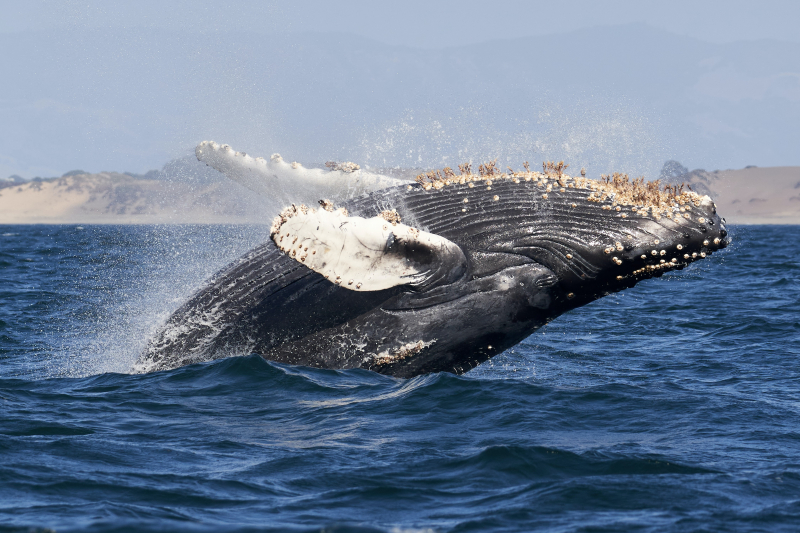
Photo by Mike Doherty on Unsplash 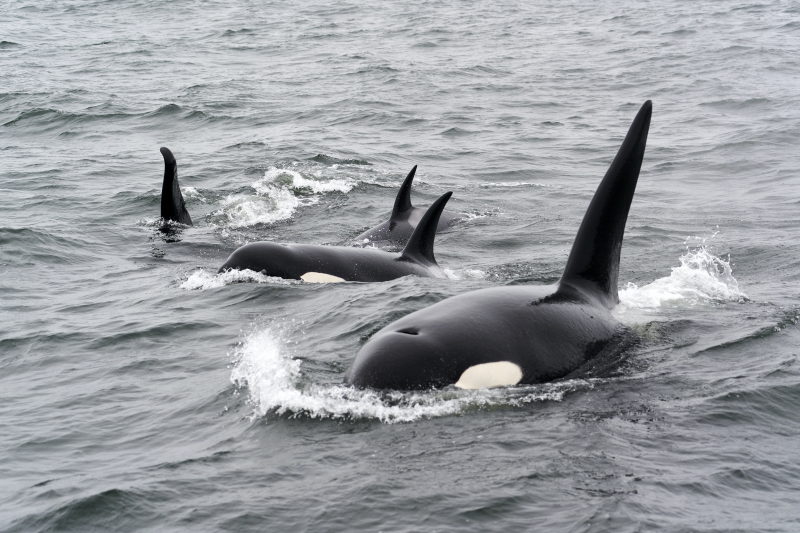
Photo by Mike Doherty on Unsplash -
The Algarve is well-known as a top seaside destination. Visitors are drawn not only to the beaches, spectacular natural rock formations, and caves, but also to the Algarve's ocean wonders, such as whales and dolphins. A wide variety of sea life inhabits or visits the Algarvian coast on a temporary basis, allowing us to observe and learn from it. The whales and dolphins are the crown jewels of the Algarve. The south coast of Portugal is a breeding and feeding ground for marine mammals and other top predators such as seabirds.
It has been established that three areas in the Western Algarve appear to have a higher concentration of marine mammals: the Portimo Canyon, Caneiros (at Ponta da Piedade, Lagos), and the So Vicente Canyon in Sagres. Underwater canyons are popular feeding grounds for marine life. The Portimo Canyon is an underwater rift valley located about 12 miles offshore (south of Praia da Rocha), near the continental shelf border, and running north to south.
In the Algarve, upwelling is caused by the summer's predominant north winds, which push nutrient-depleted surface water to the south, where it is replaced by nutrient-rich deep waters that rise to the surface. This phenomenon is a primary driver of ecosystem productivity and, as a result, the beginning of the food chain, resulting in an increase in plankton. In the other two areas, upwelling occurs on a larger or smaller scale, supporting a complex and diverse food chain. Whales, dolphins, sharks, turtles, large pelagic fishes, and numerous seabirds are found at the top of this food chain. The upwelling process is stronger in the spring and summer, attracting populations of various species to the area during these warmer months. This, combined with the excellent weather and sea conditions (no big waves or strong winds most of the time), makes this a fantastic watching location.
Location: Portugal
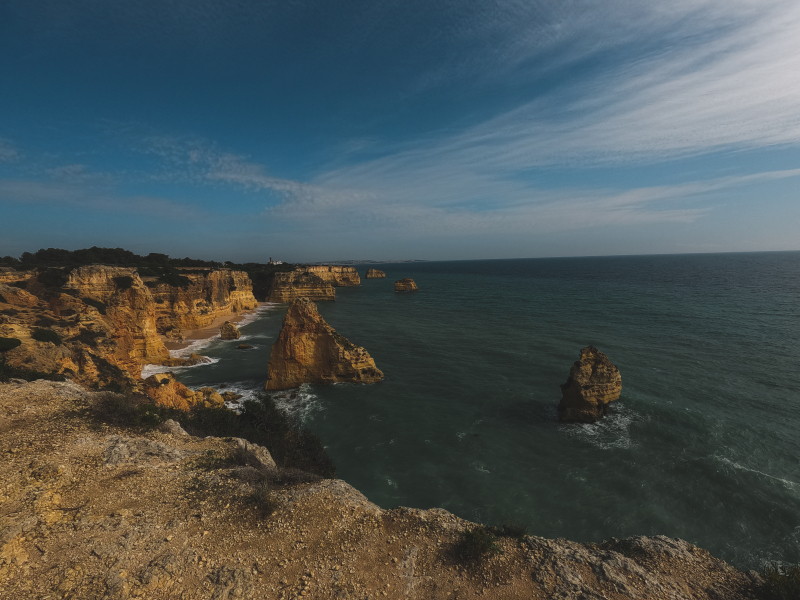
Photo by Gunel on Unsplash 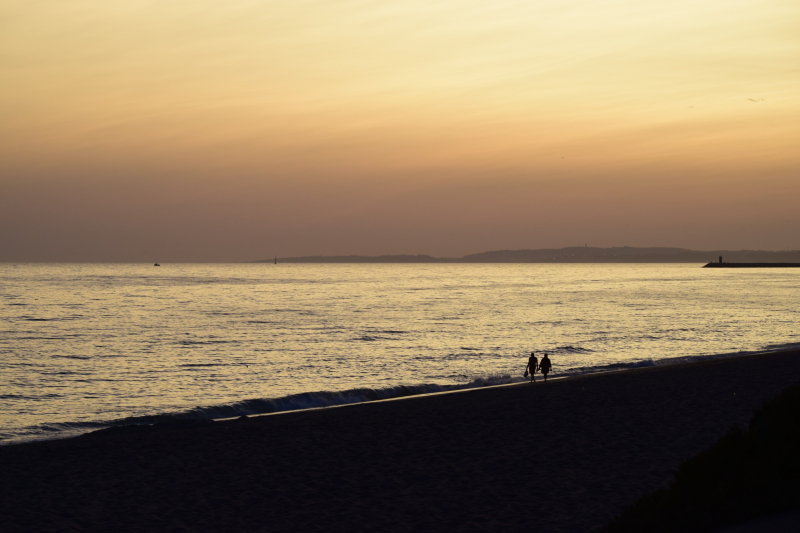
Photo by Matthew Waring on Unsplash -
Because Tenerife is located in the Atlantic Ocean and is home to a variety of whale and dolphin species, whale watching is one of the most popular tourist activities on the Canary Islands. You can use a local whale watching operator or try your luck from the shorelines to spot them. Whale watching tours in Tenerife are available from a number of companies, with most departing from Los Cristianos, Costa Adeje Los Gigantes, or Las Galletas. These tours are typically several hours long and include a tour guide who will provide information about the whales and dolphins you will see on your trip. Many of the tours also include extras like snacks, drinks, and underwater cameras for photographing the whales and dolphins.
The best time to go whale watching in Tenerife depends on the type of whale or dolphin you want to see. The warmer months of the year, from May to October, are generally the best times to go whale watching because the water temperatures are higher, and the whales and dolphins are more active. Pilot whales can be seen all year in Tenerife, but they are most frequently seen from June to September. Sperm whales can be seen all year, but they are most commonly seen from May to October. Killer whales, also known as orcas, are less common and can usually be seen between June and September.
Bottlenose dolphins and Atlantic spotted dolphins can be seen all year, but they are most active from May to October. It's important to remember that whale watching is weather dependent, and the chances of seeing whales and dolphins are higher on days with calm seas and good visibility. When planning your whale watching tour, you should also consider the time of day, as some species may be more active in the morning or evening.
Location: Spain
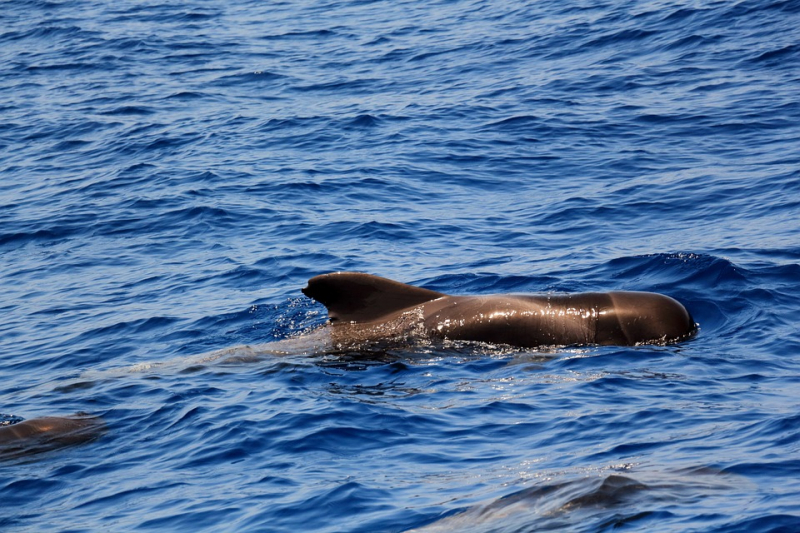
Photo by husmoke on Pixabay 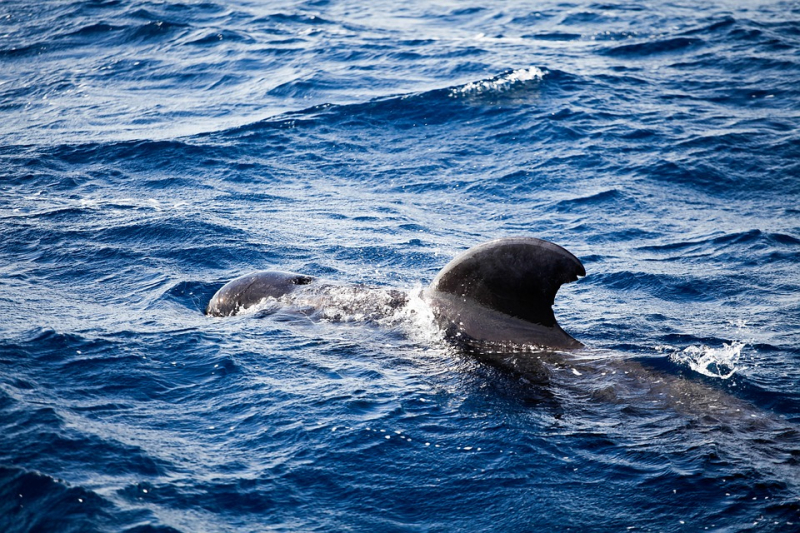
Photo by Rabenspiegel on Pixabay -
Mont Saint-Michel is not only France's second most visited monument after the Eiffel Tower; it is also a sanctuary for dolphins, who enjoy bathing in the bay of Mont Saint-Michel to the delight of Normandy residents and tourists. The Al Lark association invites you to discover the Bays of Mont-Saint-Michel and Saint-Malo in a unique way. This group of enthusiasts organizes sea excursions to admire the beautiful scenery, discover the marine environment, and learn more about the people who live in this bay.
Set out from Cancale to find the dolphins in the bay. They have the largest concentration of dolphins in Europe, with a population of over 400! Board the "Tursiops II" and set out to explore the marine environment. Look carefully, use binoculars, and keep your gaze fixed on the horizon. You might catch a glimpse of a fin. But the real magic happens when you cross the dolphin route. You'll also see many other species that live here during the 4-hour excursion, including sea birds, jellyfish, ocean sunfish, porpoises, and seals.
Then, with a large group of people, you will explore the sea in search of dolphins and other sea creatures! The length of the ballad can vary depending on the animals and the weather, but it is usually around 3h30. You will travel from 20 to 40 kilometers out to sea in order to see dolphins in action. Of course, because dolphins are wild animals, no interaction is possible. You can only take photos of them! Dolphins, on the other hand, are very playful animals, and they usually don't bother jumping in the air in front of the camera.
Location: France
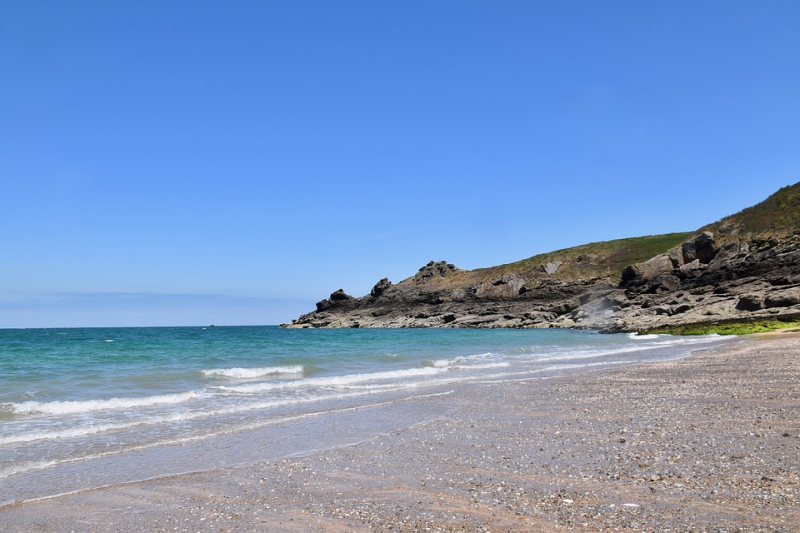
Photo by JACLOU-DL on Pixabay 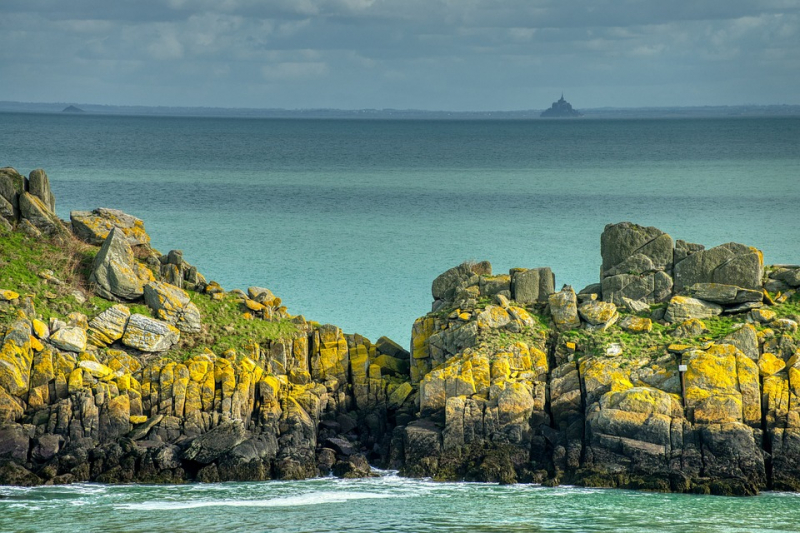
Photo by ThierryBEUVE on Pixabay -
Whales have played an important role in Iceland's history since its settlement in the late ninth century. As an example of that, the Icelandic word for a stroke of good luck is 'hvalreki', which translates literally to 'beached whale'. Whaling, like fishing, has been practiced in Iceland for centuries. The ocean's gentle giants are now seen as something to admire from afar. Whale watching, like seeing the northern lights, hot springs, and glaciers, is a must-do on any Iceland trip.
Depending on the time of year, you can see whales splashing around under the northern lights or illuminated by the midnight sun. Whale watching from Reykjavik is a short walk from the city center, making it an easy activity to fit into a busy itinerary. There are also towns and villages all over the country that offer whale watching, so there are plenty of options.
Icelandic territorial waters are home to a diverse range of krill and fish due to abundant summer daylight and a unique combination of cold and warm sea currents. As a result, Iceland is a thriving feeding ground for 24 different whale species, ranging from the massive sperm whale to the diminutive harbor porpoise. The likelihood of seeing specific types of whales on a whale-watching trip varies according to the port of departure. The minke whale, on the other hand, is the most commonly seen animal and can be seen all year.
Minke whales are the most common whales in Icelandic waters, with many migrating here during the summer and a few remaining during the winter. They are small in comparison to other species but can grow to be 30 feet (9 meters) long. Their behavior is typically shy, but due to their abundance, you can see them from almost all whale-watching ports, including Reykjavik.
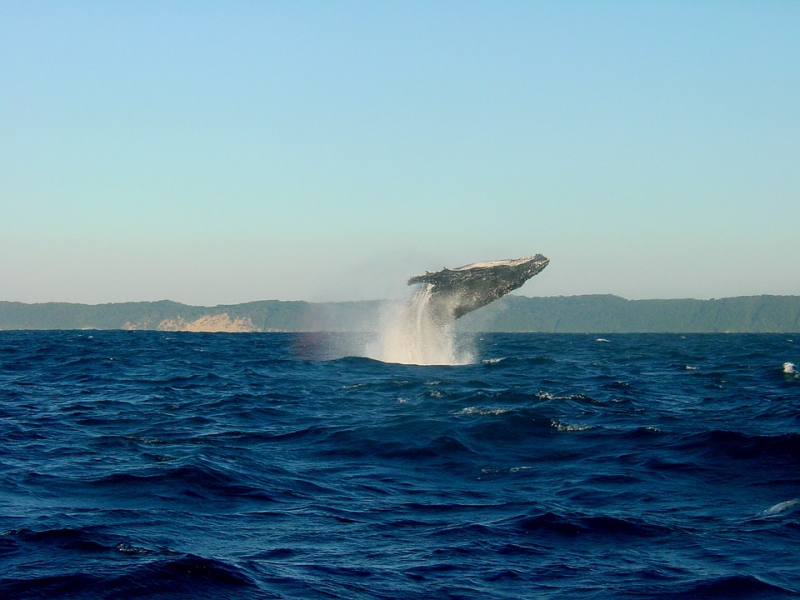
Photo by YanceTAY on Pixabay 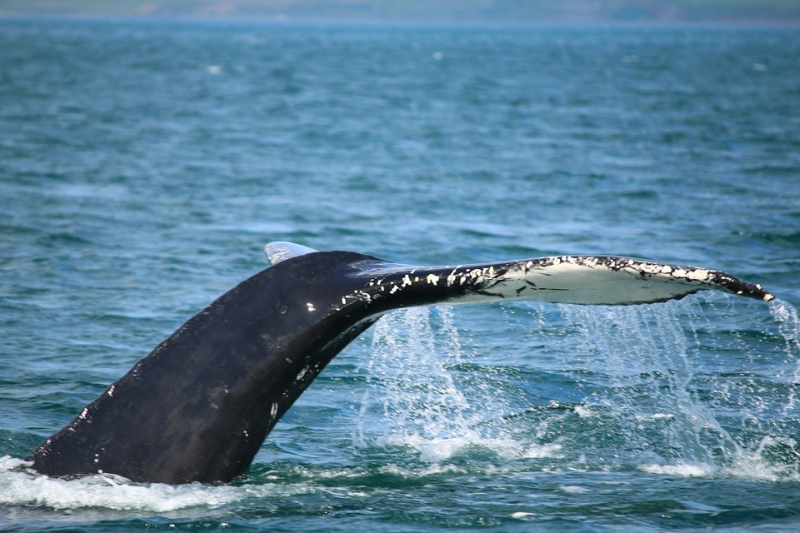
Photo by naturfreund_pics on Pixabay -
Whale watching in Tarifa is an unforgettable experience that will leave you with memories that will last a lifetime. Tarifa is the southernmost region of Spain's Iberian Peninsula. This is the world's most popular location for water-based wind sports, which you'll share with incredible Cetaceans. Tarifa is situated on the Costa de la Luz, facing Morocco and the Strait of Gibraltar. The waters lapping at the shoreline are a mix of the Atlantic Ocean on one side and the Mediterranean Sea on the other, with Portugal and the Madeira Islands sharing the same waters. As part of their migratory route, several species of whales and dolphins pass through this section of the ocean.
If you want to see whales up close and personal, Tarifa is an excellent place to board a boat and join a tour. Whale watching is one of the most wonderful and one-of-a-kind excursions available in Europe. It is ideal for families, couples, and single travelers. Tarifa's whale watching season runs from April to October. The peak season runs from mid-June to early September, and most tour operators can guarantee a high chance of seeing whales during this time. Whales are present in the Tarifa area all year, but sightings are more likely during the summer months.
The Strait of Gibraltar is home to a variety of whales, including orcas and sperm whales. Orcas are most commonly seen in July, near the end of the whale watching season. During the Tarifa whale watching season, sperm whales are frequently seen. Most experts recommend taking a boat tour at least twice during the day. This will broaden your scope and increase your chances of seeing whales and dolphins. Orca trips typically last 3 hours and take you further out to sea, whereas other whale watching tours last 2 hours.
Location: Spain
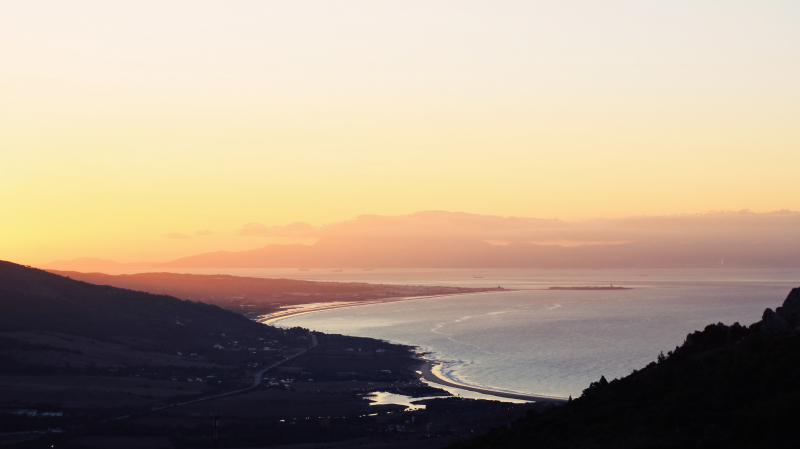
Photo by Mike Kotsch on Unsplash 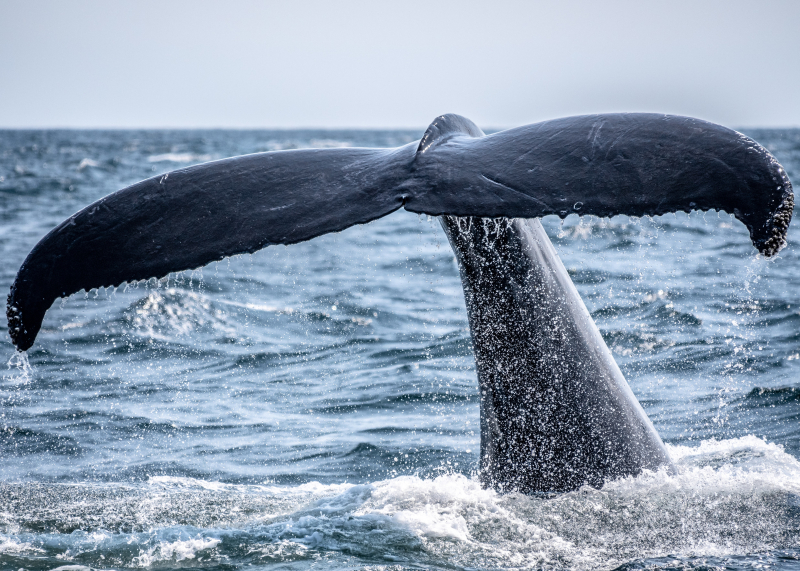
Photo by Richard Sagredo on Unsplash -
Whale watching in Norway is an excellent way to observe marine mammals in their natural environment. Indeed, Norway is an excellent destination for whale watching, as there are numerous spots throughout the country where you can see cetaceans. Northern Norway, on the other hand, is the primary region for Norwegian whale watching. There are a variety of whales to see, including humpbacks, orcas, blue whales, and sperm whales.
Because different types of whales appear at different times of year, the best time for whale watching in Norway depends on the region you visit as well as the wildlife you want to see. However, the Norway whale watching season generally lasts from the end of October to the middle of January. Humpback whales can be seen off the Norwegian coast from October to the end of March. Norway orcas can be found in the region from the end of October to the middle of January, while porpoises visit in the summer. From May to September, you can also see blue whales, fin whales, humpback whales, minke whales, and belugas near the Svalbard Islands.
Some locations even permit Norwegian whale watching all year. Many marine mammals, such as sperm whales, humpback whales, minke whales, orcas, pilot whales, white-beaked dolphins, and harbor porpoises, can be seen off the coast of the Vesterlen Islands all year. If you want to go whale watching in Norway at any time of year, you should plan a trip to the Lofoten Islands. Simply book this wildlife sightseeing cruise, and chances are you'll see at least one type of marine mammal. However, certain whale species can only be seen at certain times of the year.
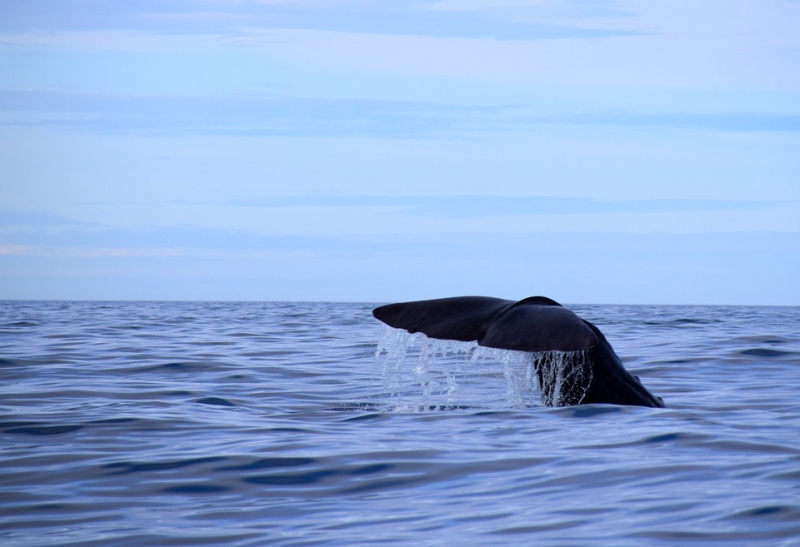
Photo by 6391394 on Pixabay 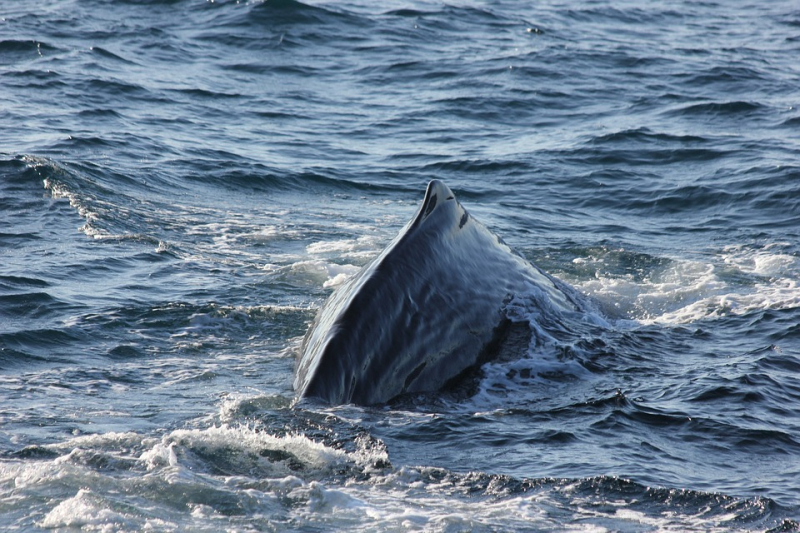
Photo by nesslinger-it on Pixabay -
Whale watching in Ireland, and particularly in West Cork, has now reached a peak for whale and dolphin watchers all over the world. During the early 1990s, the Irish government declared Ireland's coastal waters a whale and dolphin sanctuary. The first of its kind in Europe, it paved the way for whale watching in Ireland to become a popular activity for the country's many visitors. Coastal waters off the southwest coast of Ireland serve as a summer feeding ground for a variety of whale species and a year-round home for a number of resident dolphin species, including the Harbour Porpoise.
Fin Whales and Minke Whales are among the baleen whales commonly seen off Ireland's south coast, making whale watching in Ireland some of the best in Europe. Off the southwest coast, humpback whales can also be seen. These large marine mammals can be seen just a few kilometers offshore and feed on a variety of small shoaling fish in Irish waters for more than seven months of the year.
In Irish waters, 24 different species of whales and dolphins have been observed. Over 12 cetacean species have been spotted in West Cork waters in recent years, making it one of the richest areas in Ireland for whale and dolphin watching. Irish whale watching has definitely taken off in West Cork, with a wide variety of species present for more than half of the year. Minke Whales begins to arrive off the coast in March. Fin Whales usually arrives in late summer/early autumn. Both species remain active until early winter, providing some spectacular opportunities to see these large marine mammals only a few kilometers from the coast if sea conditions are favorable. The less predictable Humpback Whales traditionally arrive during autumn months.
Location: Ireland
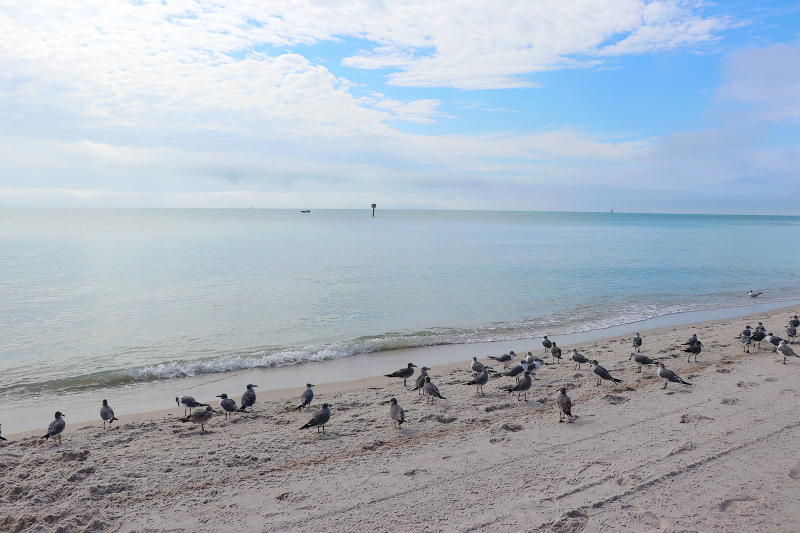
Photo by Lynn Danielson on Unsplash 
Photo by Touann Gatouillat Vergos on Unsplash























